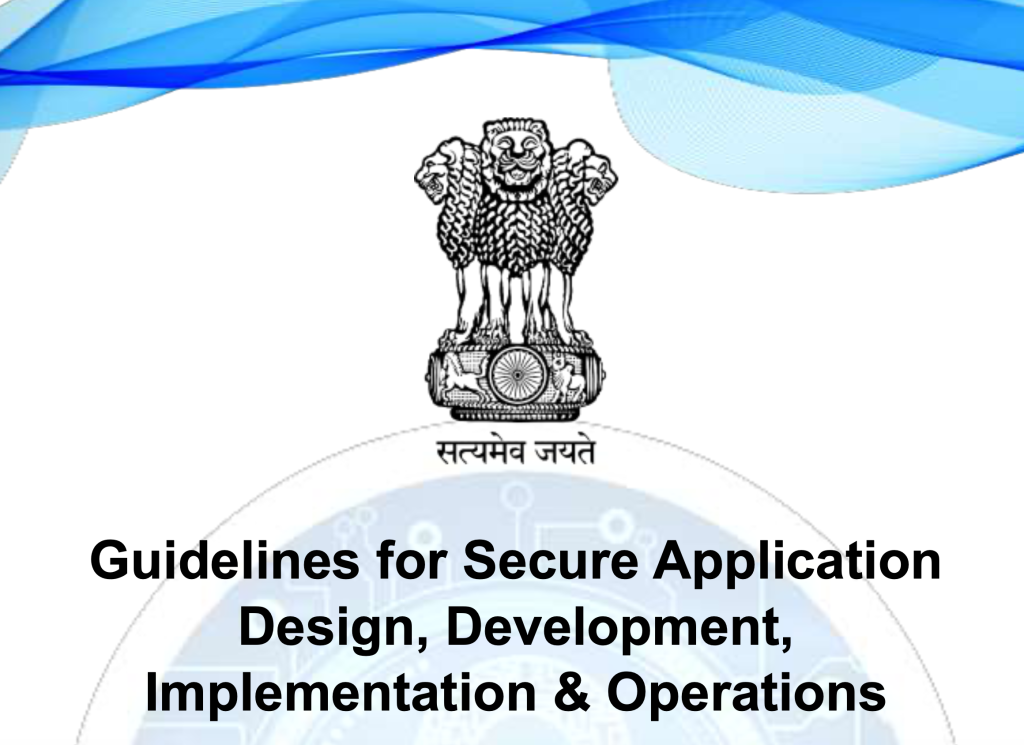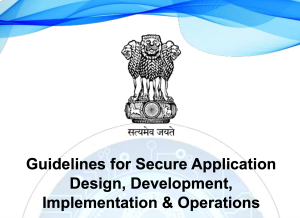
The Indian Computer Emergency Response Team (CERT-In) released its updated guidelines in January 2024, aimed at ensuring secure application design, development, implementation, and operations. These guidelines emphasize building security from the ground up, advocating a proactive approach where security is integrated at every phase of development, rather than as an afterthought.
The Need for Secure Application Design
One of the primary causes of vulnerabilities in software systems is inadequate attention to security during the design, development, and implementation stages. CERT-In’s 2024 guidelines emphasize that relying solely on post-development audits for security is insufficient. Instead, security should be a fundamental aspect of the application’s lifecycle—from conception to operations.
Key Phases of Secure Application Development:
The guidelines are divided into four key phases:
1. Establish the Context of Security:
• Embrace a Security by Design approach that incorporates security measures into the system’s architecture early on.
• Adopt a Secure Software Development Life Cycle (SDLC) that integrates security at every step. The document highlights frameworks like Microsoft SDL and OWASP SAMM.
• Engage security-trained designers and developers who understand cybersecurity principles and can identify potential vulnerabilities during development.
2. Ensure Secure Development Practices:
• Authentication, Authorization, and Session Management: Secure practices ensure only authorized access and protect data privacy. Systems must validate identities and manage user sessions securely to prevent unauthorized access.
• Cryptographic Practices: Data encryption, digital signatures, and proper hashing should be utilized to safeguard sensitive information. Outdated cryptographic techniques should be avoided.
• Version Control and Change Management: These practices ensure that modifications to applications are tracked and securely tested.
• Secure Coding: Input validation and sanitization techniques are essential to prevent vulnerabilities like SQL injection and cross-site scripting (XSS).
3. Guidelines for Auditing Applications:
• Conduct thorough Source Code Reviews and Security Vulnerability Assessments. Audits must be carried out by CERT-In empanelled organizations to ensure applications meet the required security standards.
• Penetration Testing: Simulated cyberattacks help organizations identify vulnerabilities in their systems, allowing for the implementation of preventative measures before malicious actors exploit them.
• Applications that do not follow secure design and development practices should not be considered for assessment and audit, as per CERT-In’s guidelines.
4. Secure Application Deployment and Operations:
• Deployment: Secure deployment requires an environment tested for security vulnerabilities, with proper logging, monitoring, and secure configuration management tools like Ansible or Puppet.
• Patch Management: Organizations must have processes in place to apply patches swiftly, ensuring that vulnerabilities are addressed without introducing new risks.
• Supply Chain Risks: Secure development of updates and patches ensures protection against risks originating from third-party developers.
The Role of Secure Software Development Life Cycle (SDLC)
The SDLC models promoted by the guidelines ensure that security is embedded within each phase of development, from requirement analysis and design to testing and deployment. Frameworks like NIST SSDF provide comprehensive strategies for building secure applications that comply with global standards, reducing the likelihood of breaches.
Adoption of Advanced Security Practices
The guidelines also encourage organizations to adopt advanced practices, such as:
• Threat Modeling: Identifying potential attack vectors and addressing them early in development.
• Security Test Driven Development (STDD): Writing security tests before actual code is developed, ensuring vulnerabilities are addressed early.
• Building Trust Boundaries: Isolating critical systems and ensuring data validation is performed both client-side and server-side.
Enhancing Software Security Maturity
To improve the maturity of software security, the guidelines suggest adopting models such as Capability Maturity Model Integration (CMMI). This model allows organizations to assess and improve their software development processes, emphasizing the need for continuous improvement, proper code reviews, and security practices.
Conclusion: Security is Not an Afterthought
The CERT-In guidelines highlight that secure applications are not built by accident—they are the result of deliberate and well-executed security measures embedded within every phase of the development lifecycle. By adhering to these best practices, organizations can create resilient systems that are more difficult to exploit, thereby protecting sensitive data and maintaining trust.
Organizations aiming to create secure, reliable, and compliant applications must follow these updated guidelines to stay ahead of potential cyber threats and ensure their applications are built with security as a core pillar.
Tags: #SecureSoftwareDevelopment, #ApplicationSecurity, #CERTInGuidelines, #Cybersecurity, #SDLC, #SecureCoding, #PenetrationTesting, #DataEncryption, #ThreatModeling, #SoftwareSecurityMaturity, SecureSoftwareDevelopment, ApplicationSecurity, CERTInGuidelines, Cybersecurity, SDLC, SecureCoding, PenetrationTesting, DataEncryption, ThreatModeling, SoftwareSecurityMaturity





